Hygrophila difformis variegated
Scientific name: Hygrophila difformis variegated
Family: Acanthaceae
Maximum size reached under cultivation: 25 - 60 cm (9.84 - 23.62 inch)
014
Recommended pH range: 6.2 - 7.3
Recommended water hardness: 4 - 18°dGH (71.43 - 321.43ppm)
0°C 32°F30°C 86°F
Recommended temperature range: 22 - 24 °C (71.6 - 75.2°F)
Preferred propagation method: Cuttings
Native to: Cultivated form / Hybrid
Growth rate: Fast
Recommended substrate: Fine gravel
Lighting requirements: Bright
Ideal placement in tank: Background
Common Name
Variegated Water Wisteria
Origin
Hygrophila difformis 'Variegated' is a cultivated form of Hygrophila difformis, developed through selective propagation for its distinctive leaf coloration. While the wild type originates from South and Southeast Asia (notably India, Thailand, and Bangladesh), the variegated variant is not found in the wild and is primarily grown in aquariums and nurseries.
Growing Conditions
This cultivar thrives in both submerged and emersed conditions. When fully submerged, it produces highly decorative, finely divided leaves with pale or whitish veins, especially under bright lighting. In emersed form, the leaves become broader and less dissected, and the plant may produce pale purple flowers above the water surface in open setups.
The ideal growing conditions include bright light, a pH range of 6.2 – 7.3, and water hardness between 4 – 18 °dGH. The plant grows quickly in temperatures between 22 – 24 °C (71.6 – 75.2 °F), though it tolerates up to 28 °C. Supplementing with a CO2 system and liquid fertilizers can further enhance coloration and growth rate.
Planting Area
Due to its rapid vertical growth and eventual height of 25 – 60 cm (9.84 – 23.62 inches), Hygrophila difformis 'Variegated' is best suited for the background of the aquarium. It can also be planted in groups to create a lush wall effect or used in open-top aquariums where it may grow emersed.
Propagation
This plant is easily propagated through stem cuttings. Simply take a healthy cutting from the mother plant, remove the lower leaves, and plant the stem into the substrate. The cutting will soon develop roots and grow into a new plant. Nutrient-rich water will support faster rooting. Though rare, flowering plants may also produce seeds in emersed setups, but cuttings remain the preferred propagation method.
Difficulty
Hygrophila difformis 'Variegated' is considered an easy-to-grow plant, suitable even for beginner aquarists. It is adaptable to a wide range of water conditions and does not require strict maintenance. However, it grows rapidly and requires regular pruning to prevent shading of other plants.
Short Description
Hygrophila difformis 'Variegated', known as Variegated Water Wisteria, is a striking cultivar prized for its finely divided leaves and pale or white variegation. Contrary to some outdated claims, the coloration is not caused by a virus but is a result of selective breeding. This self-contained mutation does not pose any risk to other plants in the aquarium.
The plant’s fast growth helps absorb excess nutrients such as nitrates and phosphates, making it an effective ally in algae control. It is ideal for natural aquascapes and community tanks, offering both visual appeal and biological benefit. Regular pruning encourages bushier growth and propagation opportunities.
Frequently Asked Questions (FAQ)
-
Is Hygrophila difformis 'Variegated' safe for all aquarium setups?
Yes, this plant is non-toxic and safe for freshwater community tanks. Its rapid growth and nutrient uptake even help improve water quality.
-
Is the white coloration in the leaves caused by a virus?
No. The pale or white veins are a result of selective breeding and are not caused by a virus. The variegation is stable and does not affect other plants in the tank.
-
Can this plant grow above the water surface?
Yes. In open-top aquariums or paludariums, Hygrophila difformis 'Variegated' can grow emersed and may even produce small purple flowers.
-
How often should the plant be trimmed?
Trimming once every 1–2 weeks is usually sufficient, depending on growth speed. Regular pruning encourages bushier and healthier growth.
-
Does it require CO2 supplementation?
It grows well without CO2, but using a CO2 system will enhance coloration, density, and growth speed.
-
Can Hygrophila difformis 'Variegated' be grown in low light?
It prefers bright lighting. In low light, the growth slows down, and the leaf variegation may become less pronounced.

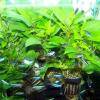 Hygrophila corymbosa
Hygrophila corymbosa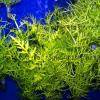 Hygrophila difformis
Hygrophila difformis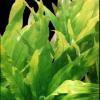 Hygrophila guianensis
Hygrophila guianensis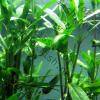 Hygrophila polysperma
Hygrophila polysperma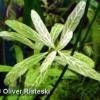 Hygrophila polysperma ‘Rosanervig’
Hygrophila polysperma ‘Rosanervig’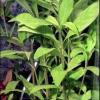 Hygrophila salicifolia
Hygrophila salicifolia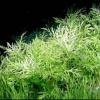 Synnema triflorum
Synnema triflorum